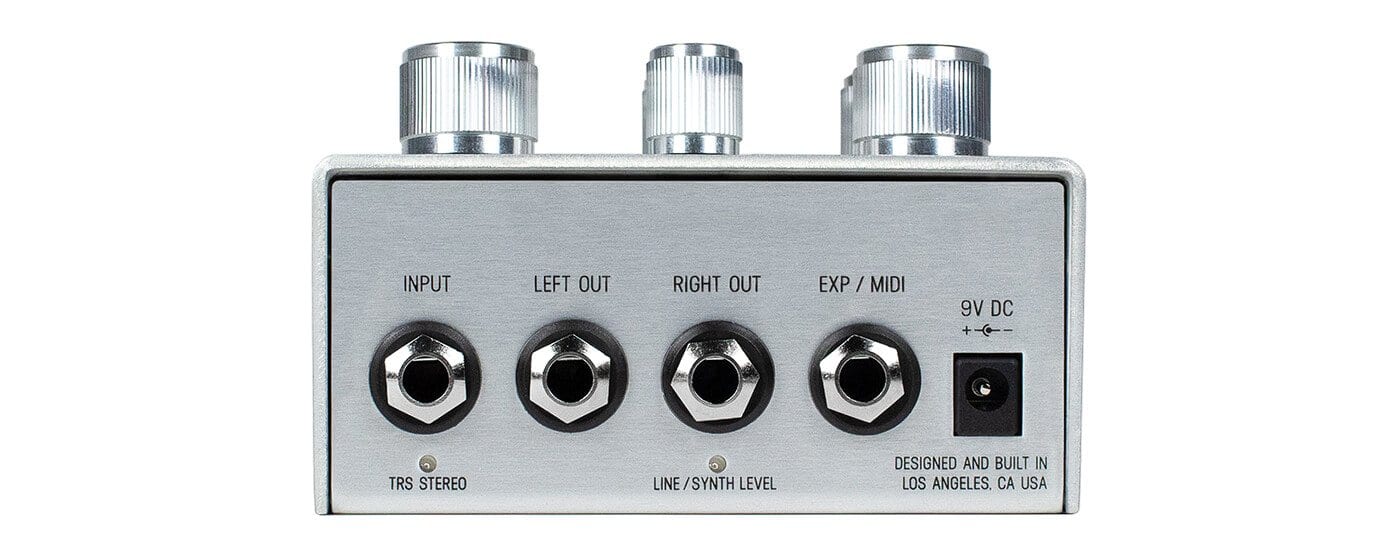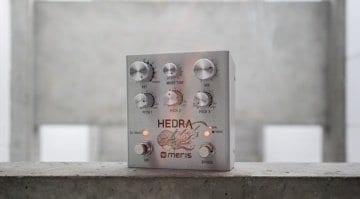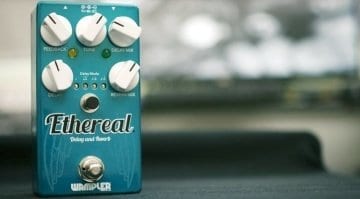Meris Hedra: 1990s studio rack rhythmic pitch shifting – in a guitar pedal!
Meris’s new Hedra effect gives guitarists a ’90s studio rack rhythmic pitch shifting effect in a compact pedalboard-friendly format. Make no mistake: this is one powerful pedal with plenty of tricks up its sleeve.
Meris Hedra
Designed in the USA, the Hedra pitch shifter has some neat tricks up its sleeve. Think along the lines of Steve Vai and his experimentation with rhythmic pitch shifting on the classic Passion and Warfare album and you’ll get the gist of what is possible with this pedal.
The Hedra comprises a neat user interface consisting of six knobs and two footswitches labelled Tap and Bypass. As an effect, it has a relatively simple layout that belies its real power. The Key, Micro Tune and Mix knobs all do what they say. The three Pitch controls let you dial in the rhythmic pitches. This is where all the fun really starts and you could probably lose yourself for days tweaking just these three parameters.
Hedra also has four built-in delay settings each with tap tempo. The delay is applied to each voice, then the effect is routed back into four matrices. From there, things can get pretty wacky. Take a few minutes to watch the official demo video below and you’ll hear what I mean.
Hidden Layers
The Hedra also has two discrete buttons above each footswitch that light up. These are labelled Alt and Dual/Series and allow you to open up the user control and give you another layer to the effect and access those delays.
Let’s take a closer look at the delays. Dual: splits the delay into two short delays with a stereo output. Dual + Series: The same two delays as Dual, but now with cross-feedback applied to them. Series: One long series delay with standard feedback. Pitch Feedback: This is when neither Dual nor Series engaged. This last one is a long series delay with the pitch shifters routed to the feedback loop.
Alt
In Alt mode, each pitch control becomes a time offset for the voice assigned to it. The Micro Tune function now controls the pitch correction and glide control. The Alt Key will now give you access to the following scales: major, minor, Eastern and minor pentatonic.
This is one powerful pedal. But it’s a lot easier to dial in than a ’90s studio rack, and dispenses with menus and the tiny screen. It also has a MIDI input so it can be triggered by your DAW or even a synth. Plus, it can be used with an external foot controller, so you can really open up the possibilities of this little pedal.
RRP – USD 299 / GBP 319
More Information
Video
You are currently viewing a placeholder content from YouTube. To access the actual content, click the button below. Please note that doing so will share data with third-party providers.










